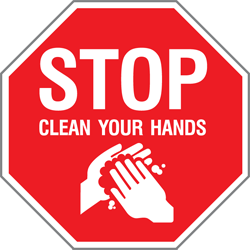To those who are familiar with it, the independently-developed video game Minecraft is often touted as either one of the greatest things to come out of the gaming industry in decades or a shallow game in which a simple, blocky protagonist aimlessly wanders around in a simple, blocky world populated by simple, blocky animals.
We think it’s neither. Under its surface, the game is full of learning opportunities.
First, what is Minecraft? It’s a video game, developed in Java for Mac, PC , mobile and the Xbox by a company called Mojang. The player takes the role of an unnamed protagonist who finds themselves alone in a massive, wild, undeveloped world and has to find, farm, mine & build food, tools, shelter, lighting and clothing in order to survive.
That’s it, really. There are no levels to complete, no missions to accomplish, no real point to the game, actually, other than survival. It’s all up to the player – much like life, Minecraft is what you make it – and people have made a large number of rather nice things using this game as a medium. The most fascinating thing to come from this game is that despite this openness & this lack of constraints the player community has independently developed very similar methods of solving problems.
As time passes in the world of Minecraft, the square sun arcs across the sky much as our familiar round one does. When it moves below the horizon, darkness sets in and monsters (who hate the light!) start to appear. This day-night cycle – peace during the day, frenzied fear at night – drives more diverse and interesting gameplay than most quests, missions or storyline campaigns than developers ever could have included.
Confronted by the threat of nocturnal monsters, players often prefer not to spend their nights cowering in a cave. So what do they do? It’s simple – modify the environment to suit the needs of the player character (letting you accomplish stuff in a well-lit area while waiting for night to pass) while making it hard for the monsters to get at you (and your hard-earned stuff, because monsters hate the light, remember?).
Here are but a handful. These public safety tips have been collected by players, and the best ones have become mantra: “Don’t dig straight up!” “Be careful around lava!” “Don’t taunt the Creepers!” With a well thought-out, well-lit shelter area built along these “best practices”, monsters aren’t getting in unless you accidentally let them in.
It’s amazing how these just came about – players who had their fun ruined by being pushed into a lava lake by a zombie getting the word out so their buddies won’t go through the same thing – it’s shockingly similar to the field of infection prevention and control. The act of securing your shelter is even eerily close to declaring an area under isolation – setting up barriers so organisms can’t get in and lights so they can’t multiply (ultraviolet lamps are used for disinfecting). We could call it “Monster Prevention and Control”, if we wanted to.
In the real world, monsters don’t come out at night, but they do come when we least expect it, and we certainly can’t see them. Rather than Creepers and skeletons we have bacteria like Clostridium difficile and MRSA, but what they both have in common is that they come from out in the community, and are most prone to coming in only through players (people) as vectors who let them in.
Community-acquired infections have their own best practices that have been collected, researched and shared by people. “Practice the Five Moments of Hand Hygiene!” “Healthy visitors only!” “Wear a mask if you have flu symptoms!”
The game lets you place signage – even if you’re not playing with other players, reminding yourself of dangers (“Don’t dig! Lava!”) can mean the difference between staying safe and losing hours of playtime through equipment lost in the molten rock. In real life, signage warning before you enter an area that could contain dangerous bacteria should be even more crucial, after all you’re looking to lose more than just a few hours of playtime. You can also use signage (or gigantic landmarks!) to clearly label caches of supplies and weapons to fight monsters so you’re ready in an emergency – just as you should mark alcohol-based handrub in a hospital setting so people can use it to fight infection. (Or you can just use a giant landmark.)
Lastly we learn that without help we’re stuck figuring out these best practices on our own. Thankfully, Minecraft players have a wiki to go to for help, there are plenty of resources regarding infection control, and both are being constantly added to as new techniques are learned.
Who said video games never taught us anything?


Leave a Reply